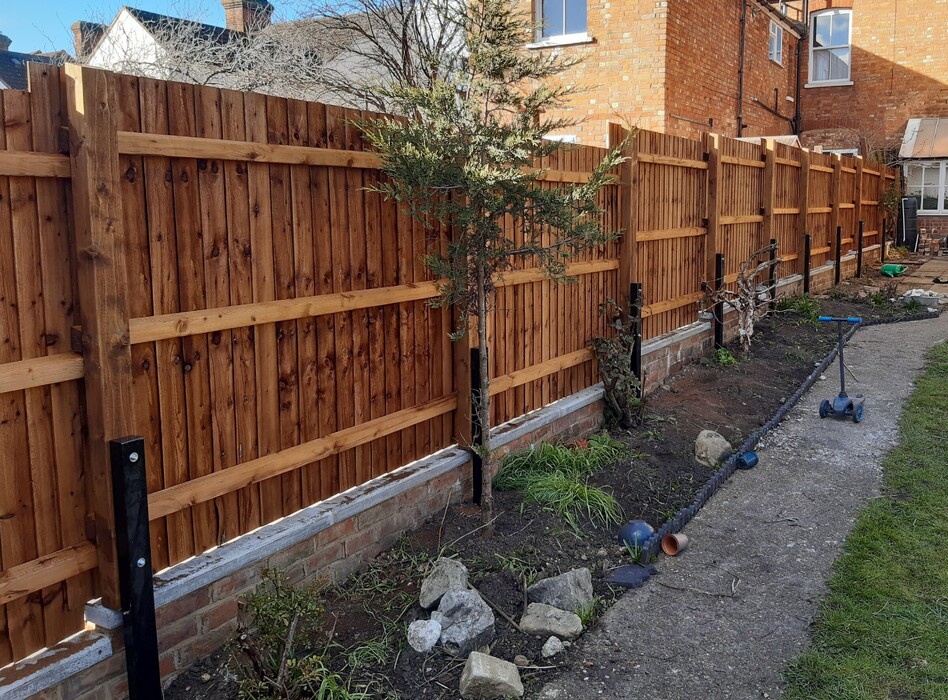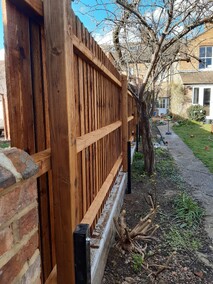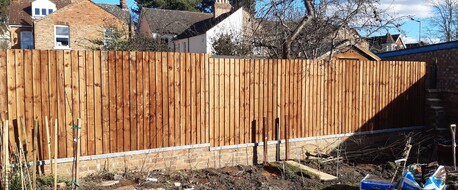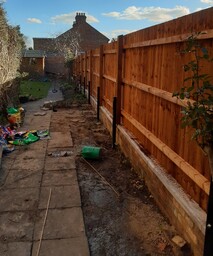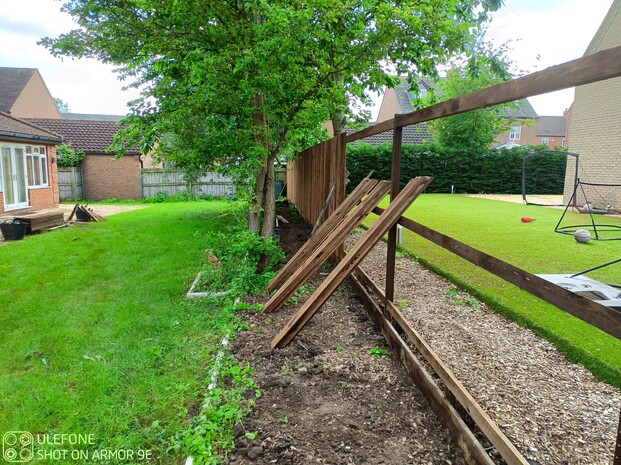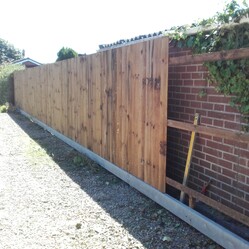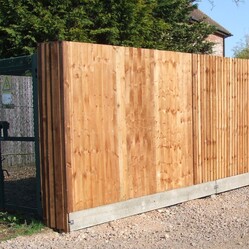Closeboard Fencing
This type of fence is generally considered to be the strongest fence for most domestic applications and also works well for commercial application as well.
Traditional Closeboard is built up from individual components and is clad with feather edged boards. There are a number of different options for this type of fence from a choice of materials, the type of post and then you can choose the type of rail and gravelboard but in all cases the cladding is feather edge boards.
Closeboard can be installed on timber, concrete or steel posts. Both concrete and steel will offer longer life spans over timber. Timber is the most easily adaptable material to work with and from an aesthetic point of view remains very popular. It is of course also the least expensive option in terms of material cost. A minimum post size for Closeboard fencing should be 100mm x 100mm for morticed posts. If you are considering using notched posts, this is where a ‘V’ shape is cut from the face of the timber to fit an arris rail, the post should be at least 125mm x 100mm, but ideally 150mm to allow sufficient strength in the timber.
Cheaper ‘contract type’ closeboard is simply square posts installed with rails nailed across the face and feather edge attached. Beloved of building companies for site perimeter work this closeboard method is the most economic type of closeboard fence that can be built up. It’s often the widest fence as well. A 100mm post, plus a rail, plus the feather edge boarding, you can be looking at a fence 170mm - 180mm wide. For boundary work where your garden space is precious it’s not ideal, it is however an easy DIY build if you are tackling it yourself.
Generally morticed posts are the most common type used. Concrete recessed posts are, for the same height of fence slightly larger and tapered but offer significant strength over the morticed option.
One of the main features of the morticed posts / recessed post debate is the look of the finished fence. This can apply to timber closeboard as well. If you are attaching rails to the face of the post or using a recessed post the fence will pass over the face of the post. This means that when viewed from the front you cannot see the posts. Please take a look at the images in this section to see the differences.
Closeboard fencing on morticed posts:
With this method the posts are visible between the sections of timber cladding. Traditionally the arris rails are shaped at the ends to fit into the mortice. The gravelboard is also fitted in between the posts. A centre stump should be fitted to the bottom rail and gravelboard to tie the two pieces together. This helps prevent sagging over time but more importantly stops the movement in the timber and the closeboard section ‘falling off’ the gravelboard. The sections are then clad with feather edge boards
Closeboard on Recessed posts:
Recessed posts are generally made from concrete and you can fit a choice of rails. These could be arris rails, cant rails or normal rectangular section. For concrete recessed type these rails are all bolted on which makes the fixing very secure. If you are using ‘V’ notched posts the rails are generally nailed in.
Closeboard fencing is extremely strong and versatile for domestic fencing, with many options available from material choice, the height, the length of section and cladding finish.
Please contact us if you have any queries.
Closeboard fence on concrete posts
Above you can see the build up of closeboard fencing on morticed concrete posts. This was interesting because the client wanted different levels to take into account rise and fall of the ground level but also varying height levels of the hedge and view out. The fence also had to meet up with an existing run of closeboard previously installed. Our work was completed in 2020 and the job was located in Milton Keynes.
Closeboard above stepped brick wall.
The images above show closeboard fencing fitted above a low brick wall. In this instance the client had taken down an old unstable brick wall and a builder had tidied and re-pointed then fitted copings. The garden had a slight gradient and the wall had been stepped down.
In order to retain privacy and security in the garden, and maintaining the original boundary line I fitted purpose made steel spurs into the ground and bolted timber posts onto the face. This enabled rails to fitted and then the fence was clad with feather edge boards following the step down in the brick work. As you can see, the face fitting rails mean the front of the fence sits very nicely just on the front edge of the coping leaving no room for sitting or standing on the wall!
Closeboard on Durapost.
The image shows the fence in the final stages of completion with just the feather edge cladding to go on.
I have used cant rails on this install with a standard 150mm timber gravelboard across the face of the posts. You can probably just make out the center stump.
Surprising how many contractors miss these but they tie the bottom rail and gravelboard together and in turn this keeps the feather edge sitting on the gravelboard.
Using Durapost would allow the fence to be clad on both sides if you needed.
You can find more details on Durapost here.


